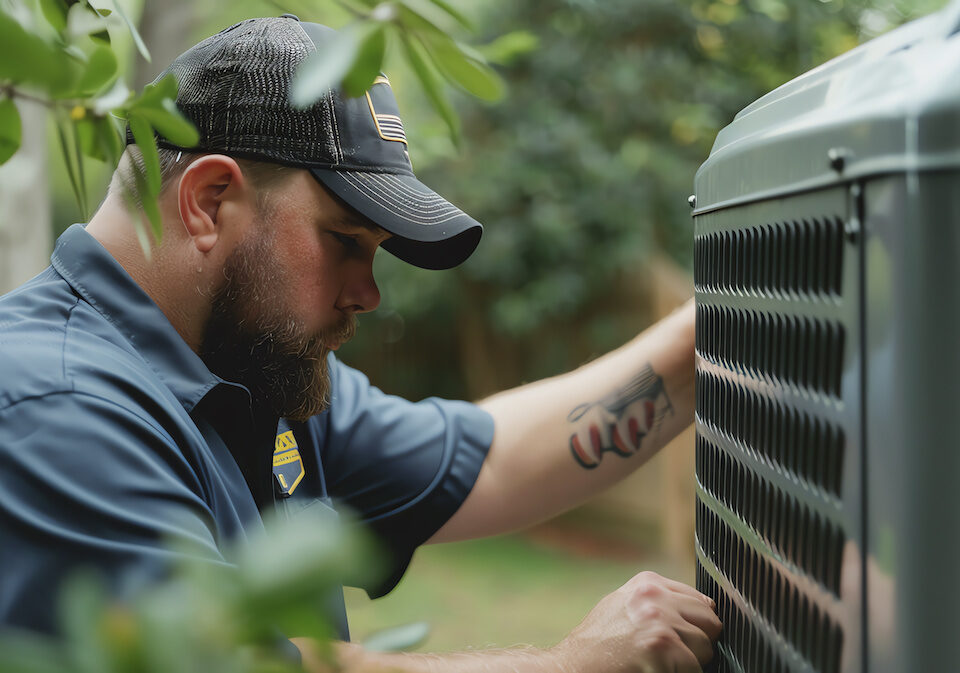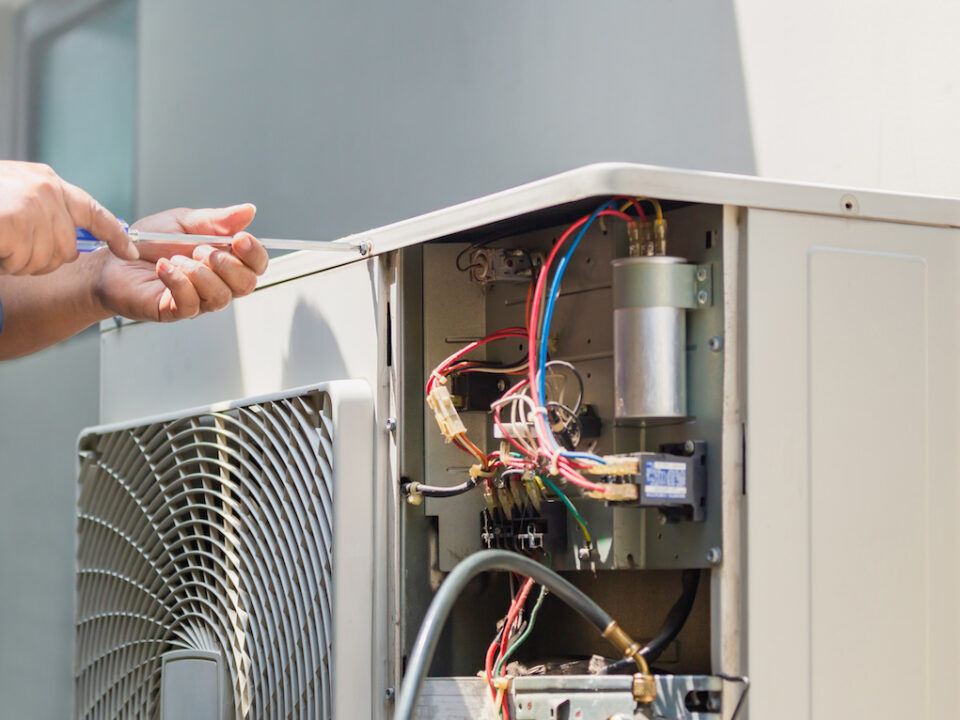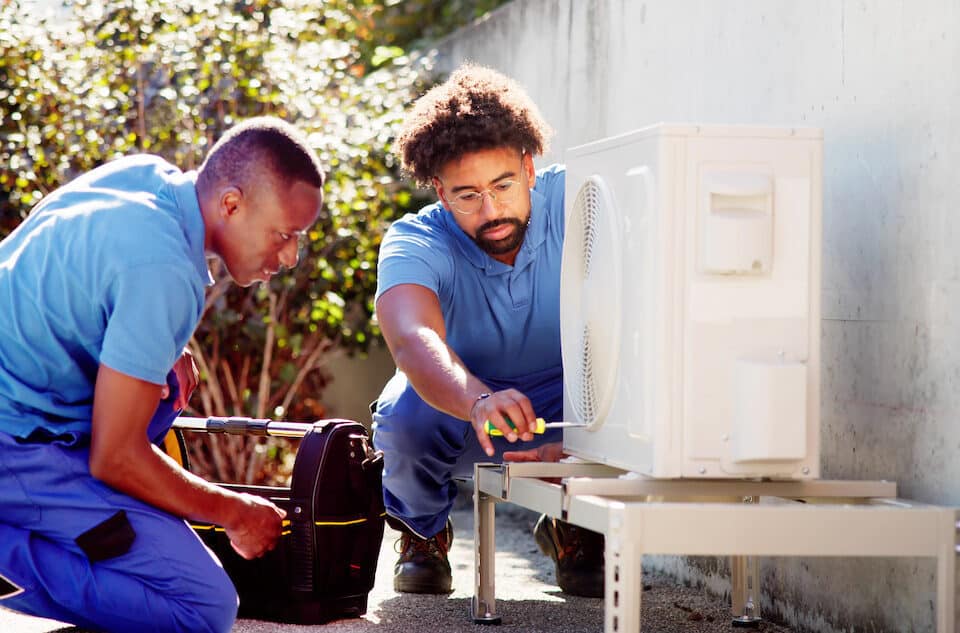What is Zoned Heating and Cooling?

In today’s world, energy efficiency and personalized comfort are at the forefront of home heating and cooling solutions. Zoned heating and cooling systems offer an innovative approach to managing indoor climates, providing tailored temperature control across different areas of your home.
At Trust Heating and Air, we specialize in helping homeowners understand and implement these advanced systems to optimize both comfort and energy savings. In this blog, we will explore the concept of zoned heating and cooling, how it works, its benefits, and why it might be the right choice for your home.
Understanding Zoned Heating and Cooling
Zoned heating and cooling is a method that divides your home into different zones or areas, each with its own thermostat. This allows for independent temperature control in each zone, enabling you to heat or cool specific areas as needed.
Traditional HVAC systems rely on a single thermostat to regulate the temperature of the entire house, which can lead to uneven heating or cooling and increased energy consumption. Zoned systems address these issues by offering a more flexible and efficient approach.

How Zoned Heating and Cooling Works
A zoned heating and cooling system uses a series of dampers installed in the ductwork of your HVAC system. These dampers can open or close to direct airflow to specific areas of the house. Each zone has its own thermostat that communicates with a central control panel. When a thermostat in a particular zone calls for heating or cooling, the control panel signals the dampers to adjust the airflow accordingly. Here’s a step-by-step look at how these systems operate:
1. Dividing the Home into Zones
The first step in creating a zoned system is to divide the home into different zones. These zones are typically based on factors such as:
- Occupancy Patterns: Areas that are frequently used versus those that are rarely occupied.
- Sunlight Exposure: Rooms that receive more sunlight and may require more cooling.
- Usage Function: Areas like bedrooms, living rooms, kitchens, and basements that may have different heating and cooling needs.
2. Installing Dampers in the Ductwork
Motorized dampers are installed in the ductwork to control the flow of air to each zone. These dampers are essential components that enable the system to direct air where it is needed.
3. Setting Up Thermostats
Each zone is equipped with its own thermostat. These thermostats allow residents to set the desired temperature for their specific area, providing personalized comfort.
4. Central Control Panel
A central control panel coordinates the entire system. It receives input from the thermostats and adjusts the dampers accordingly to ensure each zone maintains its set temperature.
Benefits of Zoned Heating and Cooling
Zoned heating and cooling systems offer numerous benefits that make them an attractive option for many homeowners. Here are some of the key advantages:
1. Enhanced Comfort
One of the most significant benefits of zoned systems is the ability to provide customized comfort throughout your home. Each family member can set the temperature in their own space according to their preference, eliminating the common issue of some rooms being too hot or too cold.
2. Energy Efficiency and Cost Savings
Zoned systems can lead to substantial energy savings. By only heating or cooling the areas that are in use, you can reduce your overall energy consumption. This targeted approach means your HVAC system doesn’t have to work as hard to maintain a comfortable temperature, leading to lower utility bills.
3. Prolonged HVAC System Lifespan
Because zoned systems reduce the workload on your HVAC system, they can help extend its lifespan. When your system doesn’t have to operate continuously at full capacity, it experiences less wear and tear, which can lead to fewer repairs and a longer operational life.
4. Improved Indoor Air Quality
Zoned systems can also contribute to better indoor air quality. By controlling the airflow more precisely, these systems can help reduce the spread of dust, allergens, and other pollutants throughout the home. This can be especially beneficial for individuals with allergies or respiratory conditions.
Ideal Homes for Zoned Heating and Cooling
While zoned heating and cooling systems can benefit almost any home, they are particularly well-suited for certain types of homes and situations:
1. Multi-Story Homes
Homes with multiple levels often have significant temperature variations between floors. A zoned system can ensure that each floor remains comfortable, addressing the common problem of upstairs rooms being warmer than downstairs rooms.
2. Large Homes
In larger homes, different areas may have varying heating and cooling needs. Zoned systems allow for efficient temperature management, preventing energy waste and ensuring consistent comfort throughout the home.
3. Homes with Large Windows
Rooms with extensive window areas can experience more significant temperature fluctuations due to sunlight exposure. Zoning allows you to manage these variations more effectively, maintaining comfort without overworking your HVAC system.
4. Homes with Occupancy Variations
If certain areas of your home are used more frequently than others, a zoned system can provide heating and cooling precisely where and when it is needed, optimizing energy use based on occupancy patterns.
Installation and Maintenance of Zoned Systems
Implementing a zoned heating and cooling system involves several key steps. It is essential to work with experienced professionals to ensure proper installation and maintenance.
1. Professional Assessment
A professional HVAC technician will assess your home to determine the most effective zoning plan. This assessment includes evaluating the layout of your home, existing ductwork, and identifying the best locations for thermostats and dampers.
2. Installation Process
The installation process typically involves:
- Installing Dampers: Placing motorized dampers in the ductwork to control airflow to each zone.
- Thermostat Setup: Installing individual thermostats in each zone for precise temperature control.
- Control Panel Configuration: Setting up the central control panel to manage the system’s operation based on input from the thermostats.
3. Regular Maintenance
Regular maintenance is crucial to ensure the longevity and efficiency of your zoned system. This includes:
- Ductwork Inspection: Checking for leaks or obstructions in the ductwork that could impact airflow.
- Damper Functionality: Ensuring dampers are operating correctly and making adjustments as needed.
- Thermostat Calibration: Verifying that thermostats are accurately measuring and controlling the temperature in each zone.

Costs and Savings of Zoned Heating and Cooling
The initial cost of installing a zoned heating and cooling system can vary based on several factors, including the size of your home, the number of zones, and the complexity of the installation. While the upfront investment may be higher than a traditional HVAC system, the long-term savings and benefits often outweigh the initial costs.
Initial Costs
- Installation: The cost of installing a zoned system typically ranges from $2,000 to $5,000 or more, depending on the specific requirements of your home.
- Equipment: The price of additional equipment such as thermostats, dampers, and the control panel.
Long-Term Savings
- Energy Efficiency: By only heating or cooling the areas in use, zoned systems can reduce energy consumption by up to 30%, leading to significant savings on your utility bills.
- Reduced Wear and Tear: The decreased workload on your HVAC system can result in fewer repairs and a longer system lifespan, saving money on maintenance and replacement costs.
Why Choose Trust Heating and Air for Zoned Systems?
At Trust Heating and Air, we are dedicated to providing our customers with the best heating and cooling solutions. Here’s why you should choose us for your zoned heating and cooling needs:
Expertise and Experience
Our team of certified HVAC technicians has extensive experience in designing and installing zoned heating and cooling systems. We stay updated with the latest industry trends and technologies to provide you with the most efficient and effective solutions.
Customer-Centric Approach
We prioritize our customers’ needs and work closely with you to understand your specific requirements. Our goal is to ensure that you receive a system that not only meets but exceeds your expectations in terms of performance and comfort.
Quality Service
From the initial assessment to the final installation and ongoing maintenance, we ensure that every step of the process is handled with the utmost professionalism and care. We use high-quality materials and equipment to guarantee the best results.
Think Zoned Heating and Cooling is Right for You?
Zoned heating and cooling systems offer a modern, efficient solution for maintaining comfortable indoor temperatures tailored to your needs. By providing enhanced comfort, energy efficiency, and improved air quality, these systems represent a significant upgrade over traditional HVAC systems. At Trust Heating and Air, we are committed to helping you navigate the complexities of zoned heating and cooling, ensuring you make the best choice for your home and family.
If you’re considering a zoned heating and cooling system, contact us today for a consultation. Our experts will guide you through the process, from initial planning to professional installation and maintenance, ensuring your home remains comfortable and energy-efficient year-round.



